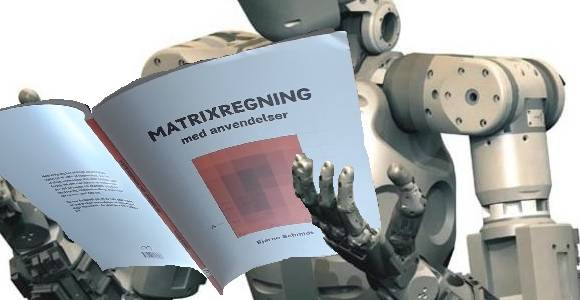Collaborative project results in book release
SDU-Mechatronics is collaborating with House of Science and upper secondary school programmes in Sønderborg on a project offering a university course in math beyond the usual curriculum at A-level for students taking a particular interest in math. The first group of students completed the course in spring 2022. The course material, that Associate Professor Bjarne Schmidt has specifically elaborated for this purpose, has subsequently been developed, refined, and now even published as a book by Matematiklærerforeningens Forlag.
- The book is thought as inspiration to upper secondary school programmes – to teachers eager to go beyond the usual math curriculum, and to students interested in math as the major topic for their final A-level project, says Bjarne Schmidt.
It was a great pleasure to him to teach the students this spring and he continues with a smile:
- You must admit that students who voluntarily continue a long day at school with extra math lessons at the university from 2.30 – 5.15pm must be every teacher’s favorite student.

The book entitled Matrixregning med anvendelser covers matrix analysis and calculations, and provides multiple applications, e.g. how the best links appear first in a Google search and how matrix calculations are applied for image optimisation and epidemic modelling.
The collaboration project is entitled MIME (Master Class in Innovation, Math, and Economics) and is financed by the Region of Southern Denmark from 2021-24. Thus, two other classes from upper secondary school will have the opportunity to boost their interest in math at SDU in Sønderborg.
A Conformal Optimized 3D Printed Kneepad with Deformation Sensing
Additive manufactured smart wearables are establishing an increasingly firm foothold within monitoring of physical activities. A tiler was the use case proposed by this study seeking to monitor changes in a tiler’s kneeling work position with the goal of tracking behaviour and alleviating long-term damage due to incorrect posture. This paper published in IEEE Access describes the development process of a conformal kneepad with embedded sensing, obtained by means of interposing flexible tactile sensors between 3D printed elastomeric layers. Topology optimization is employed towards material reduction in the context of tailoring the kneepad design for the differentiated loading which the case study imposes.
Considerations on the inherent challenges of over molding flexible geometries are provided along with a design-to-fabrication process description which visits 3D printing, post-processing and 3D scanning. The use of the latter enables the creation of a fully conformal design, optimized for the perfect fit on the person wearing the kneepad. The topology optimization is validated numerically and the ability of the kneepad to react to different pressure stimuli is tested with a robot arm, capable of simulating different contact angles and load cases. By means of dedicated electronics, the sensed information is module streamed over Wi-Fi and tactile images are formed on a user-friendly terminal. The kneepad concept ultimately serves as a case study for extended additive manufactured smart wearables, with potential to be extended towards autonomous feedback and posture correction systems.
Read the full article here:
https://ieeexplore.ieee.org/document/9525412?source=authoralert